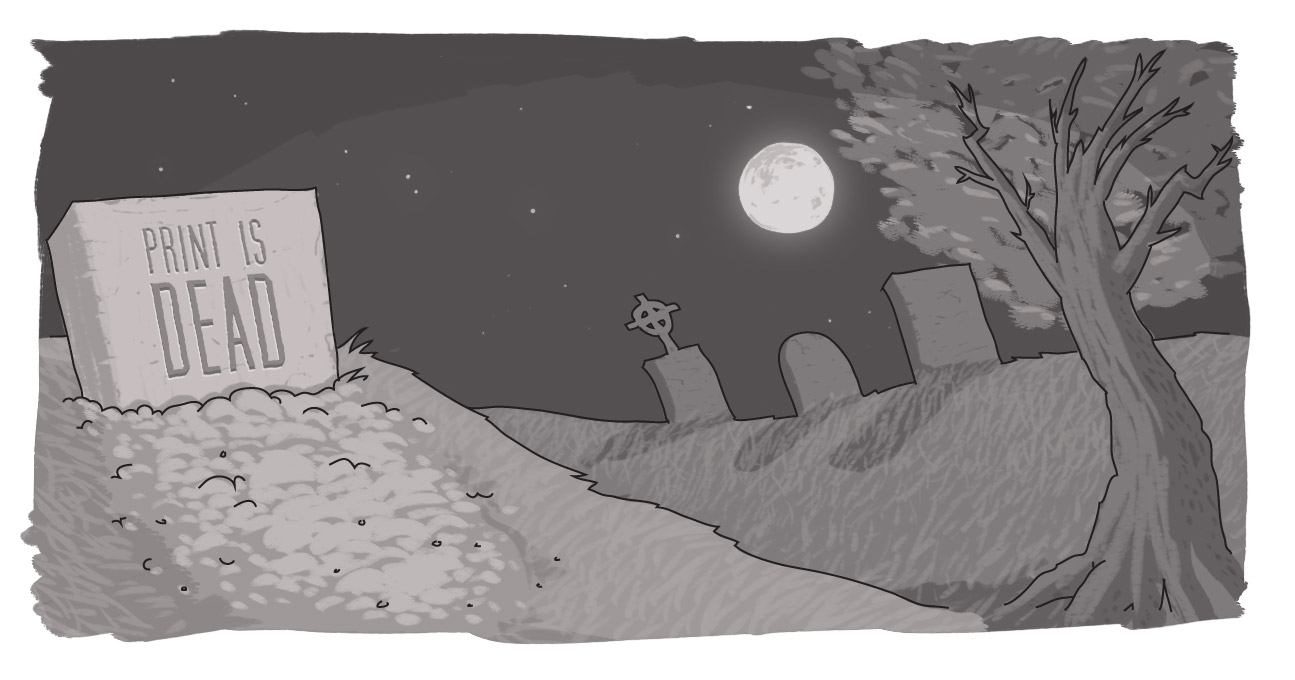Is Print Advertising Dead?

“Print advertising is dead,” or “buying print ads is like throwing your money away," – they’re just a few of the statement that I often hear in my little corner of the business world. But should you fall in line with the rumours or should you invest in print ads?
Measuring the effectiveness of a print ad for your company is always a challenge. I hear complaints that there is no way to tell how many people saw it and there positively is no way to tie a print advertisement to a sale.
Well folks -- even you naysayers -- I beg to differ. While the assertion that I am about to describe is not faultless, the methods will help you measure your print pieces to a greater degree than simply not trying it, or claiming print advertising is merely a “branding" or "awareness" effort.
Capturing Leads
One of the biggest mistake I see with print ads is that companies list their home page as the reference point. Clearly, it's pretty difficult to determine where your visitors came from if they are landing on your homepage, as there are so many points of entry: the URL in the print ad, but also search results, social media referrals, other marketing vehicles, links from other sites... It makes it far more challenging to measure the ad’s success using a commonly shared URL. How can you know it’s the AD that’s working?
I suggest creating a “Secret page” – a page that exists on your website but that is not visible through the regular site navigation or search. Visitors will have to type in the secret URL directly to view the page. I get that asking a reader to type a URL after seeing an ad is a lot to ask, but the people who do so represent far better leads than anyone who simply visits your home page.
Alternatively, you can try using a QR Code that links directly to this page, but be sure to think about what’s on the other side of your QR code. It’s best to send users to a secret page that is mobile or responsive. Ensuring you have a clear call to action and that the user experience isn't a mess this should translate into positive results. By making the page accessible only to direct traffic (or via the QR Code), you have a far greater chance of tracking the effectiveness of your campaign.
Making Sense Of It All
Increasing your web traffic is of course not the same as measuring the return of your print campaign. What you should be doing is developing strategies about how you want to match the secret URL page to your CRM program or, if not, some other technique you have for tracking the development of leads into sales.
There are many ways to do this, but here are a few suggestions:
- Try a “request a sample” form on your secret URL page. Once someone requests a sample your sales team can start a relationship and be able to track results from that relationship in terms of sales
- Link to a secret page of your e-commerce store. If you have an e-commerce shop linked to or on the back end of your corporate site, your secret URL form can link to a special e-commerce page. Tracking sales here can be slightly easier, especially with Google Analytics installed.
- Include a “request for quote” form on your secret landing page. These forms can be programmed so that when you receive the completed form, you also can be alerted as to the source of the form that was filled out.
A Few Other Techniques
If your not a fan of secret URL pages idea, you can try setting up designated email addresses or phone numbers for different ads. When using these other techniques follow-through is very important as less of the process relies on programming or automation. It is vital that your sales and marketing teams are not segregated from each other, and communicate regularly about what may be working and what isn't.
Measure Your Investment
To figure out the true return of your print campaign, remember that you need to measure -- and not just traffic (although traffic to these special pages does signify a certain amount of interest). You need to measure the investment to determine whether the return is worth your time and effort.
While it’s trendy to say that print has had its day, I'm not convinced. While making these suggestions work requires excellent communication between your teams, and while a strong CRM program assists in making the process run smoothly, overall the effort to track your print campaigns does not have to be a impossible for your organization.
Does your company still use print ads? How are you tracking success? Let us know below!
SUBSCRIBE TO OUR E-NEWSLETTER
 Subscribe
Subscribe

